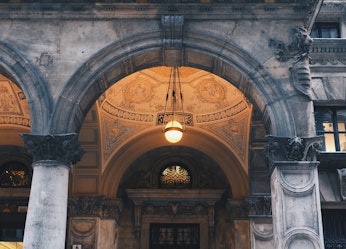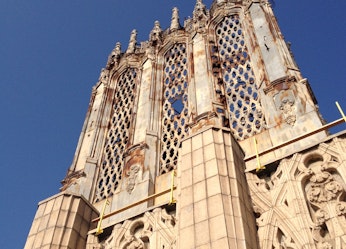

M|O Perspectives
Check back here for our thoughts on the latest developments in our industry.
Older vs. newer buildings: What’s really better–and why?
May 31, 2019
Many people will tell you that buildings aren’t built the way they used to be. What does that really mean? And what do professionals in the field believe?
Yes, it’s true, of course, that things we did decades ago are very different today. Just like about everything else, building technology has changed dramatically in the past 25 to 50 years. The real question is: Do those advancements make buildings better? And are we hanging on to lure of older buildings for other reasons?
Accessibility
Accessibility is an area of considerable advancement. The addition of proper parking, ramps, signage, door hardware and, of course, properly configured spaces like bathrooms and kitchens sets modern buildings miles apart from their predecessors. Before the enactment of the Americans with Disabilities Act (ADA) in 1992, it was very common to find public and private buildings that the disabled could not adequately access. Through a combination of appropriate legislation coupled with modern design and technology, buildings are more usable than ever in history.
Structural engineering
Structural engineering has also progressed tremendously in the past 50 years. As recently as the 1980s seismic design technology was rooted in concepts of the past. It took significant seismic events around the globe, modern engineering analysis and computer technology to allow designers to understand the true forces acting on buildings and how to adequately strengthen structures to resist them. In areas that face significant natural earthquake or wind forces, unfortunately many older buildings are doomed to be demolished as reinforcing them is too expensive and intrusive.
Energy efficiency
When comparing new structures with those of the past, energy consumption is often an area of stark contrast. Over the last 50 years, designers and engineers have come to understand the value of efficient lighting, sun shading, passive ventilation, super insulation, green roofs, advanced control systems and many other tricks of the trade. Collectively, these elements allow modern buildings to use only a small fraction of the energy that was required for buildings in the past. In a world that has realized the finite nature of fossil fuels, as well as the damage done to the planet by carbon emissions, this difference cannot be ignored.
Security
In the past, building security often translated simply as a guard walking rounds with a flashlight. As technology has advanced, buildings have become safer using access control systems, motion sensors, remote surveillance equipment, assistance stations and other items to ensure that only authorized building users are allowed into a space at any given time. With all of these advances incorporated into new design, it is hard to argue that people would feel safer in an old structure.
So, what are people really talking about when they express a love of old buildings? Usually, they are talking about the traditional or nostalgic feeling of those older structures—the history, stability and workmanship. On that note, sometimes they are referring to purely visual elements which, by comparison, really do showcase more attention to aesthetic details with implications of the care, time and effort that it took to create. Maybe in 50 years places like the Disney Concert Hall or the Beijing National Stadium will inspire the same warm feelings that old buildings do now. It will be interesting to see how our perspectives change on this along with continued advancements.
At Marx|Okubo, we often evaluate new and old buildings to determine what the right technology is for buildings in order to support all current and future uses. If you have any questions or need any consultation on evaluating building technologies, please contact sandy_blair@marxokubo.com



What we do.
- Owner's Representation
- Property Condition Assessment
- Project Management
- Constructability Reviews
- Repair | Reconstruction
- Facility Condition Assessment
- Construction Loan Monitoring
- Accessibility
- Building Enclosure
- Fire | Life Safety
- Mechanical | Electrical | Plumbing
- ESG | Sustainability & Resiliency
- Structural Engineering
- ASAP® - Automated Structure Alert Program
Marx|Okubo is a national architecture/engineering/construction consulting firm that works with real estate owners, investors and lenders—at every point of the property lifecycle—to evaluate their building projects, solve complex challenges and implement tailored solutions. We help clients understand their projects’ complexities, so they can make more informed decisions and, ultimately, mitigate their risk.




